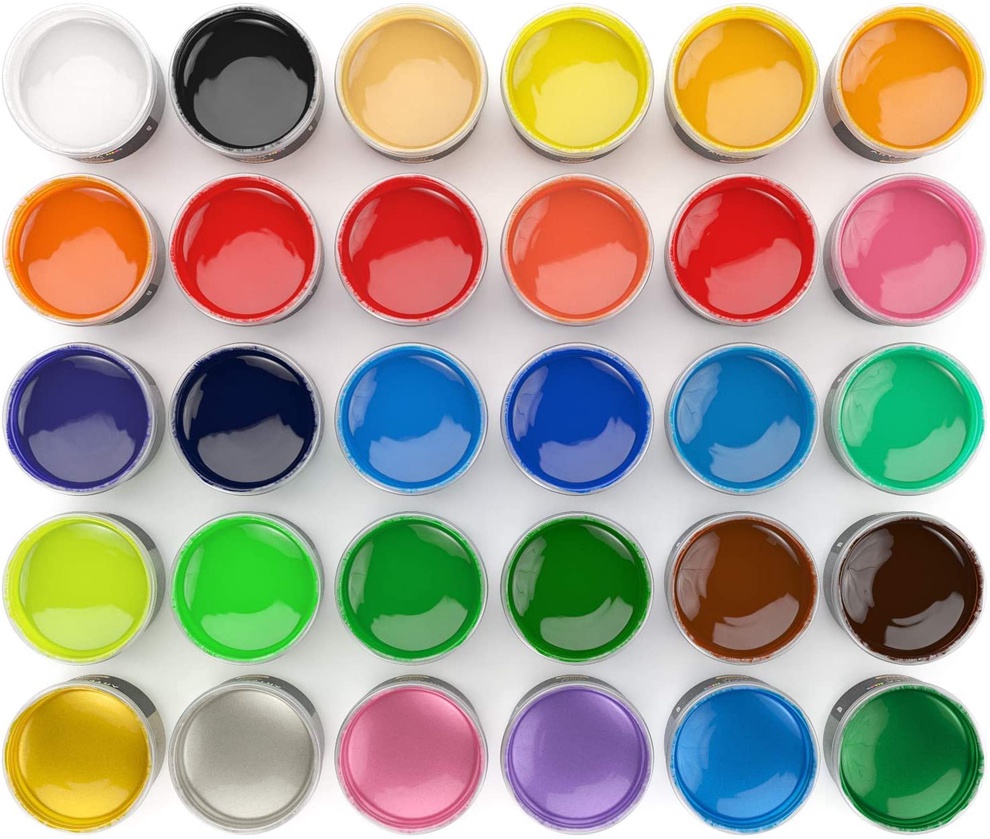Finger Paints
Are you looking for a fun and creative activity for your children? Look no further than finger paints! These colorful and versatile paints can provide hours of entertainment, while also promoting fine motor skills and creativity.
Finger Paint Pain Points
Parents may be hesitant to let their children play with finger paints due to fear of mess and stains. Additionally, some may worry about the ingredients in store-bought finger paints and their potential harm to young children.
The Target of Finger Paints
The target of finger paints is to provide a safe and enjoyable creative outlet for children, while also promoting the development of fine motor skills and imagination.
Summary of Finger Paints
Finger paints can provide a fun and educational activity for children while promoting creativity and fine motor skills. Parents may be hesitant due to concerns about mess and ingredients, but homemade finger paints can be a safe and affordable alternative. Overall, finger paints are a great way to engage children in a hands-on activity that encourages exploration and self-expression.
The Benefits of Homemade Finger Paints
One of the best things about finger painting is the ability to make your own homemade paints using simple ingredients such as flour, water, and food coloring. Not only is this a cost-effective alternative to store-bought paints, but it also allows parents to have control over the ingredients used.
When my daughter was young, we used to love making our own finger paints. It was a fun activity that we could do together, and she loved choosing her own colors and mixing the ingredients. Plus, I always felt safer knowing exactly what was in the paint that she was using.
Another benefit of homemade finger paints is that they are easy to wash off of skin and clothing, making clean up a breeze. Plus, kids love the sensory experience of using their hands to create art, and finger paints allow them to do just that!
Finger Painting as a Learning Tool
In addition to being a fun activity, finger painting can also be a valuable learning tool for young children. By using their hands to create art, children are developing their fine motor skills and hand-eye coordination. This can help with tasks such as writing and drawing later on.
Additionally, finger painting can be used to teach children about colors, textures, and even science. For example, mixing colors together can show children how primary colors combine to create secondary colors. It's a fun and interactive way to introduce basic scientific concepts to children in a hands-on way.
Safe and Non-Toxic Finger Paints
If you're still concerned about the ingredients in traditional finger paints, there are many safe and non-toxic options available. Look for finger paints that are labeled as "non-toxic" or "washable". These paints are usually made with natural ingredients and are safe for young children to use.
Alternatively, you can make your own non-toxic finger paints using ingredients such as cornstarch and water, which are safe for young children to use and ingest.
Finger Paint Activities for Children
There are many different finger paint activities that children can enjoy. Here are a few ideas:
- Finger painting on paper
- Finger painting in a sensory bin filled with different textures
- Finger painting on a large piece of butcher paper taped to the floor or a table
- Making handprint or footprint art with finger paints
Finger Paint Q&A
Q: How can I make my own finger paints?
A: To make your own finger paints, mix together flour, water, and food coloring until you reach your desired consistency and color.
Q: Are finger paints safe for young children?
A: Homemade finger paints made with non-toxic ingredients are safe for young children to use and even ingest in small quantities. However, parents should always supervise their children during finger painting activities.
Q: How can I clean up after a finger painting session?
A: Finger paints are easily washable with soap and water. You can also place a plastic tablecloth or newspaper down to protect your surfaces from stains.
Q: Are there any other benefits to finger painting besides creativity?
A: Yes, finger painting can help develop fine motor skills, hand-eye coordination, and even basic scientific concepts such as color mixing.
Conclusion of Finger Paints
In conclusion, finger paints are a fun and creative activity for children that can provide a multitude of benefits, from developing fine motor skills to promoting imagination and self-expression. By making your own homemade finger paints or choosing safe and non-toxic options, parents can provide a safe and enjoyable experience for their children without fear of harmful ingredients or stains.
Gallery
Choices For Children: Homemade Finger Paints

Photo Credit by: bing.com / finger paints homemade fingers painted play week group
Stamping Saturdays #10 - Of Life And Lacquer
Photo Credit by: bing.com / graffiti gorgeous lacquer life seche applied vite prefer liven matte dries coat because much
Kids Finger Paints, Assorted Colors, 30ml | ARTEZA

Photo Credit by: bing.com / finger paints colors kids set assorted 30ml paint arteza
Quick Edible Finger Paints
Photo Credit by: bing.com / edible finger paints quick toddler paint mama healthy via info entertaining dead creative winter urbansitter healthymamainfo
Easie Peasie Homemade Kids Finger Paints | The Honorable Mention

Photo Credit by: bing.com / finger paints homemade kids peasie easie paint preschool baby easy toddlers painting gift diy crafts gifts recipe made kid great
